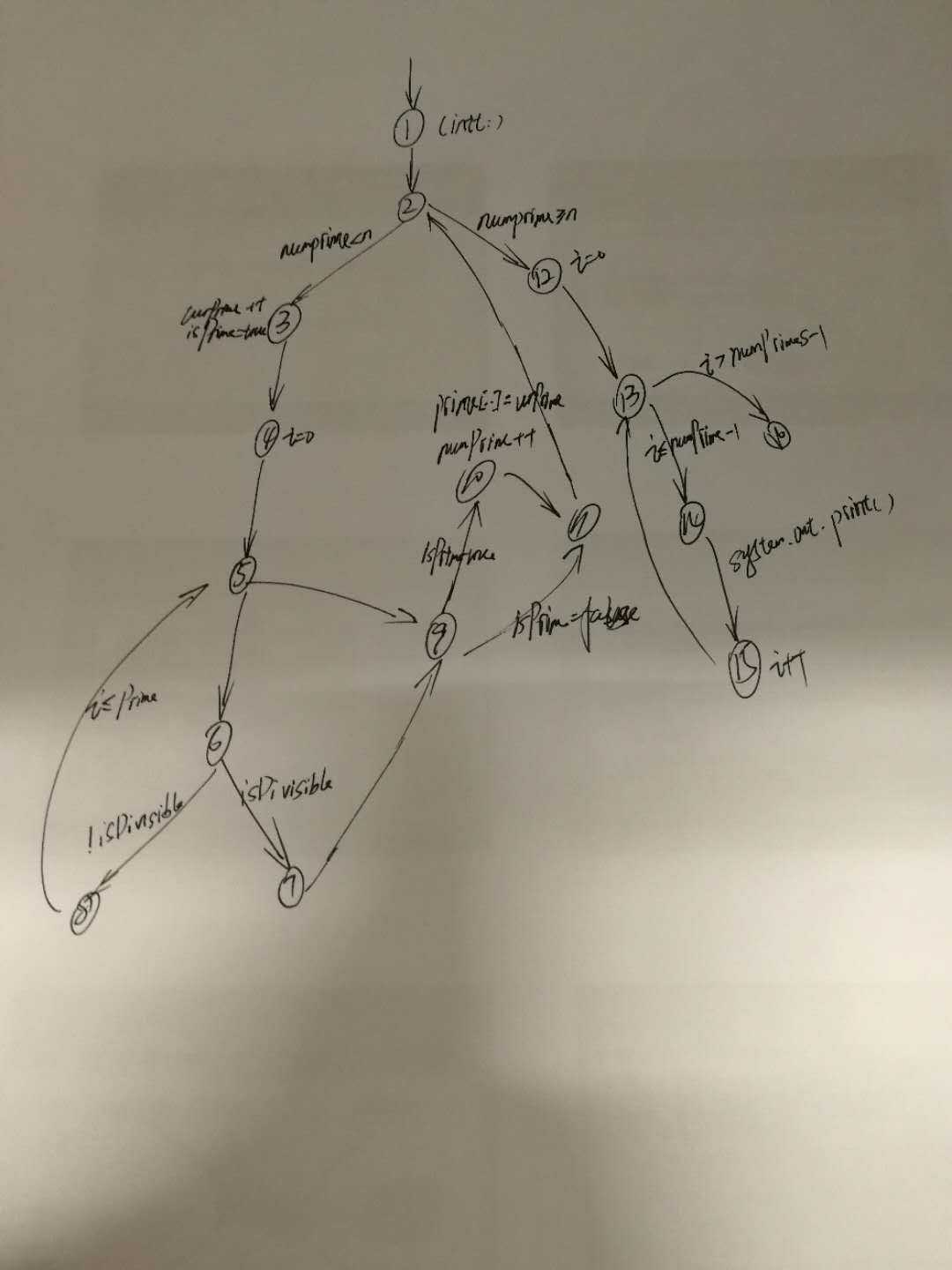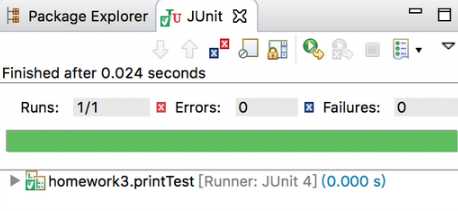/**
* Finds and prints n prime integers
* Jeff Offutt, Spring 2003
*/
private static void printPrimes(int n) {
int curPrime; //Value currently considered for primeness
int numPrimes; // Number of primes found so far;
boolean isPrime; //Is curPrime prime?int[] primes = new int[MAXPRIMES];// The list of primes.
// Initialize 2 into the list of primes.
primes[0] = 2;
numPrimes = 1;
curPrime = 2;
while(numPrimes < n) {
curPrime++; // next number to consider...
isPrime = true;
for(int i = 0; i <= numPrimes; i++ ) {
//for each previous prime.
if(isDvisible(primes[i],curPrime)) {
//Found a divisor, curPrime is not prime.
isPrime = false;
break;
}
}
if(isPrime) {
// save it!
primes[numPrimes] = curPrime;
numPrimes++;
}
}// End while
// print all the primes out
for(int i = 0; i < numPrimes; i++) {
System.out.println("Prime: " + primes[i] );
}
}// End printPrimes.
(a) Draw the control flow graph for the printPrime() method.

(b) Consider test cases ti = (n = 3) and t2 = ( n = 5). Although these tour the same prime paths in printPrime(), they don‘t necessarily find
the same faults. Design a simple fault that t2 would be more likely to discover than t1 would.
答:将MAXPRIMES=4时,t2会发生数组越界错误,但t1不会发生错误。
(c) For printPrime(), find a test case such that the corresponding
test path visits the edge that connects the beginning of the while
statement
to the for statement without going through the body of the while loop.
答:当n=1时,会通过numPrimes>=n直接从上图的2节点跳转到10节点,不经过while循环体内部。
(d) Enumerate the test requirements for node coverage, edge coverage,and prime path coverage for the path for printPrimes().
点覆盖:TR={1,2,3,4,5,6,7,8,9,10,11,12,13,14,15,16}
边覆盖:TR={(1,2),(2,3),(2,4),(3,5),(5,6),(5,7),(6,9)(6,8)(9,10),(10,5),(8,7),(7,11),(7,12),(11,13),(12,13),(13,2),(2,4),(4,15),(15,16),(16,4),(4,14)}
测试用例:{(1,2,3,4,5,6,8),(1,2,3,4,5,6,7,9,10,11),(1,2,3,4,5,6,7,9,11),(1,2,3,4,5,9,11),(1,2,3,4,5,9,10,11),(5,6,8,5),(6,8,5,6),(8,5,6,8),(8,5,6,7,9,11),(8,5,6,7,9,10,11),(1,2,12,13,16),(1,2,12,13,14,15),(13,14,15,13),(14,15,13,14),(15,13,14,15),(14,15,13,16),(15,13,16)}
Using Junit and Eclemma to test the method and cover all prime paths above
package homework3;
import static org.junit.Assert.*;
import org.junit.After;
import org.junit.Before;
import org.junit.Test;
public class printTest {
private print test = new print();
@Before
public void setUp() throws Exception {
}
@After
public void tearDown() throws Exception {
}
@Test
public void test() {
test.printPrimes(3);
}
}
测试结果:

